These sweet, cozy, and fragrant candied almonds are a winter tradition in Spain. Make them for a delicious addition to your holiday cheese platter, snack, ice cream topping, or wrap up for homemade gifts.
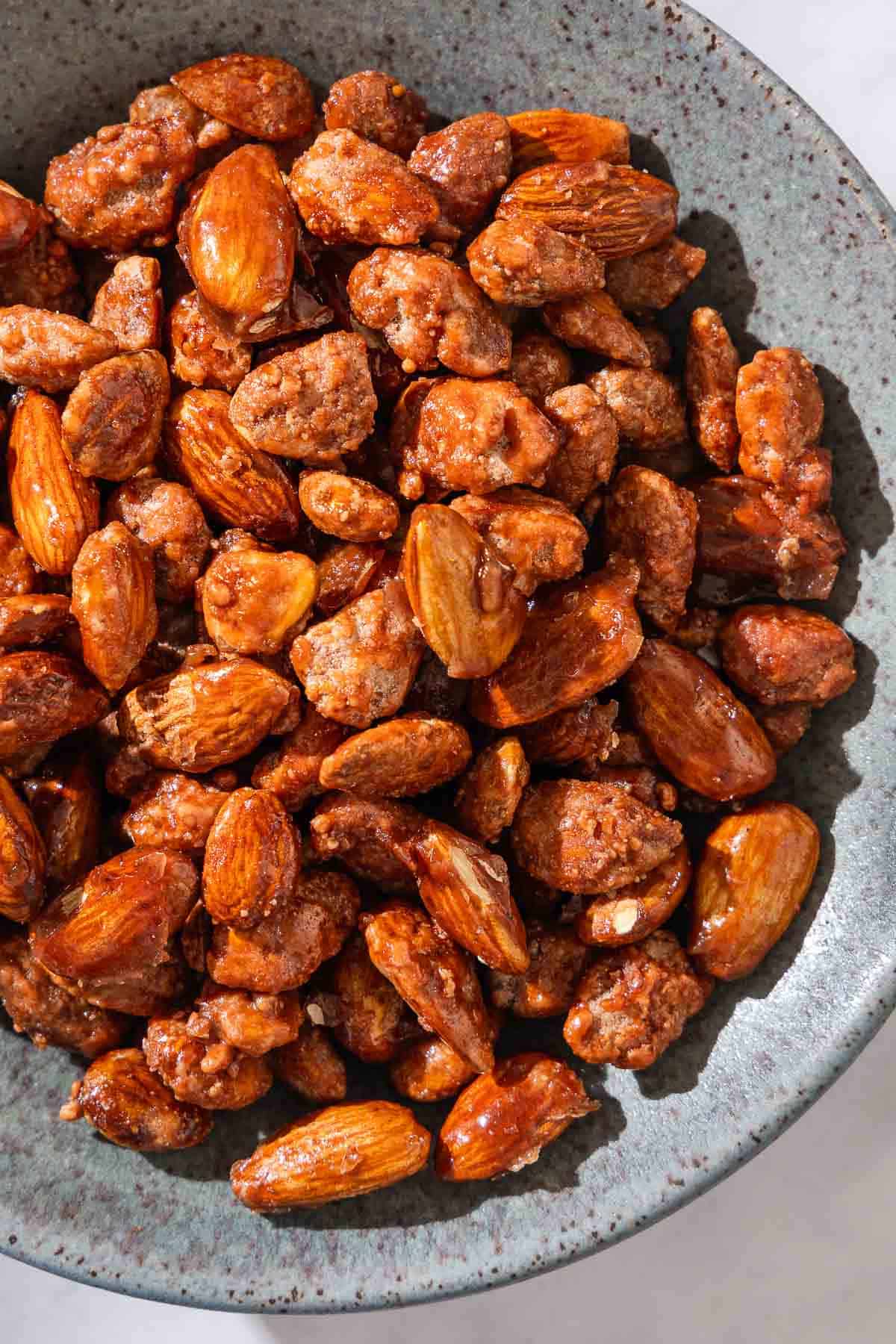
In Barcelona, the leaves don’t change colors like where I grew up in New England. Instead of looking to falling leaves to mark the passing of seasonings, I look to the street vendors. Fall feels official when they begin setting up stoves and charcoal grills for roasted sweet potatoes, chestnuts, and the Spanish-style candied almonds known as Almendras Garrapiñadas.
These cinnamon-scented candied almonds are the Spanish version of French praline. They appear just before All Saint’s Day and stay through the Christmas season, lining the major pedestrian lanes through each neighborhood, and later filling the squares with Christmas markets alongside Churros and other treats.
The vendors caramelize the almonds right in their stalls, allowing the smell to do the advertising. They’re sweet and nutty, and the toasting nuts crackle on the stoves that warm you up as you walk by.
With a little patience, you can make candied almonds at home. You simply simmer almonds in a sugar syrup until the water evaporates and the recrystallized sugar caramelizes and coats the nuts. It fills the kitchen with the tantalizing smell of toasted almonds, caramel, and warm cinnamon.
I like to serve them in a little bowl with a Cheese Board, or alongside a tray of desserts. They’re also perfect for bagging or jarring to gift to friends and family, or as a tasty alternative bringing the host a bottle of wine.
Table of Contents
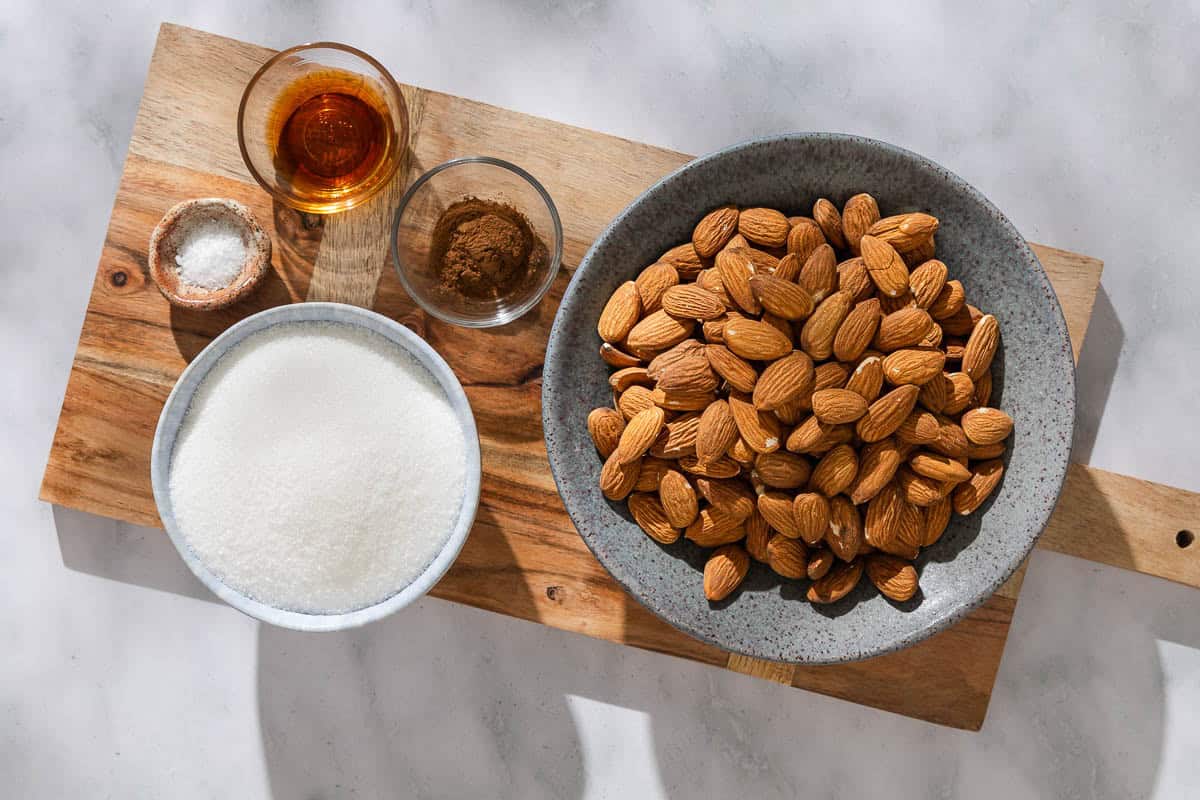
What is in Candied Almonds?
Just five ingredients—almonds and a few baking pantry staples—transform into a nutty, sweet and snack-able treat. Here’s what you’ll need:
- Almonds: Raw almonds with the skin are the traditional choice. Blanched almonds will also work, though some say the sugar doesn’t stick as well on blanched almonds. If you want to make this candied almond recipe extra special, use unsalted Spanish Marcona almonds if you can find them.
- Granulated sugar: Coats the almonds and caramelizes into a hard candy shell.
- Vanilla extract: Adds aroma and complements the flavors of the caramel and toasted almonds.
- Salt: I like to add a pinch of salt for a sweet and salty taste.
- Cinnamon: While not an essential addition, cinnamon makes these candied almonds irresistible.
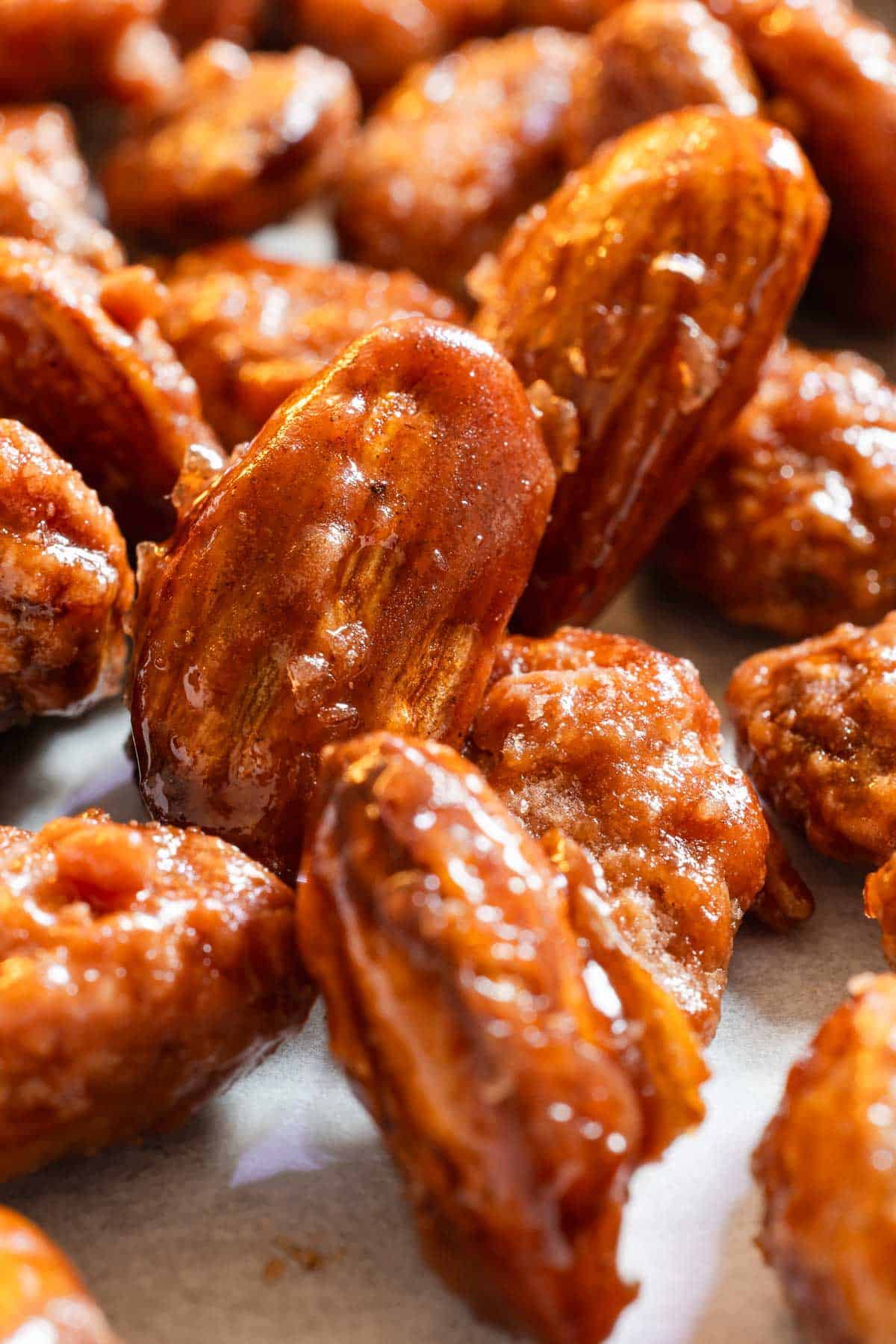
How to Make Candied Almonds
While this candied almond recipe only takes about 30 minutes, it does require a certain amount of patience while cooking down the syrup to prevent it from burning. Here’s how to candy almonds:
- Get ready: Line a baking sheet with parchment paper and set it next to the stove.
- Boil the syrup: In a large frying pan, combine 1 3/4 cups raw almonds, 1 cup granulated sugar, 1/2 cup water, 1 teaspoon vanilla extract, 1/4 teaspoon kosher salt, and (optionally) 1 teaspoon ground cinnamon. Bring the mixture to a boil over medium-high heat. Reduce the heat to medium and continue to boil, stirring occasionally with a wooden spoon, until the mixture begins to thicken and the bubbles are larger and glasslike, 3 to 5 minutes.
- Reduce the syrup: Reduce the heat to low to maintain a simmer while stirring constantly with the wooden spoon. The syrup will continue to thicken while the water evaporates. Then, as the sugar begins to recrystallize, the syrup will become gritty. All of a sudden, the sugar will fully crystallize. This should take 15 to 20 minutes.
- Caramelize the almonds: Increase the heat to medium-high and stir constantly, scraping the sugar from the bottom and sides of the pan. Continue cooking until the sugar melts again, coating the almonds, 4 to 5 minutes.
- Cool. Quickly transfer the candied almonds to the parchment-lined baking sheet. Use the wooden spoon to separate the almonds. Let the almonds cool completely before serving.
- Serve or store: The candied almonds will keep for up to 2 weeks in an airtight container. If exposed to humidity they will get sticky or start to melt.
Tips for Working with Hot Sugar
Whether it’s your first time working with hot sugar or you’re the one gifting Candied Orange Peel and Turkish Delight every time a holiday rolls around, here are my tips for the best results:
- Be patient. Maintain a simmer on low heat and adjust the heat down as the syrup thickens. If you rush and increase the heat instead of evaporating the water, you’ll begin to burn the sugar and almonds.
- In the first stage, the goal is to slowly evaporate the water. Wait to caramelize the sugar until the water has evaporated completely and the sugar has recrystallized. This coats the almonds relatively evenly in the sugar and toasts the almonds without burning them.
- Use a wooden spoon. A metal utensil will heat up in the syrup, potentially burning your hand.
- Immediately separate the almonds or they’ll stick together. Work quickly, separating the almonds as best as you can before they cool too much. If you end up with some large clusters, they taste just the same. You can break them apart, or enjoy them like brittle.
- If you’re worried about burning the sugar, consider holding the cinnamon. The cinnamon makes these almonds even more irresistible, but it also turns the sugar brown. This makes it difficult to see if the syrup is caramelizing, a helpful visual cue for adjusting the burner temperature. If you haven’t caramelized sugar before, or you’re worried about burning the almonds, skip the cinnamon to make it easier until you get a feel for the process.
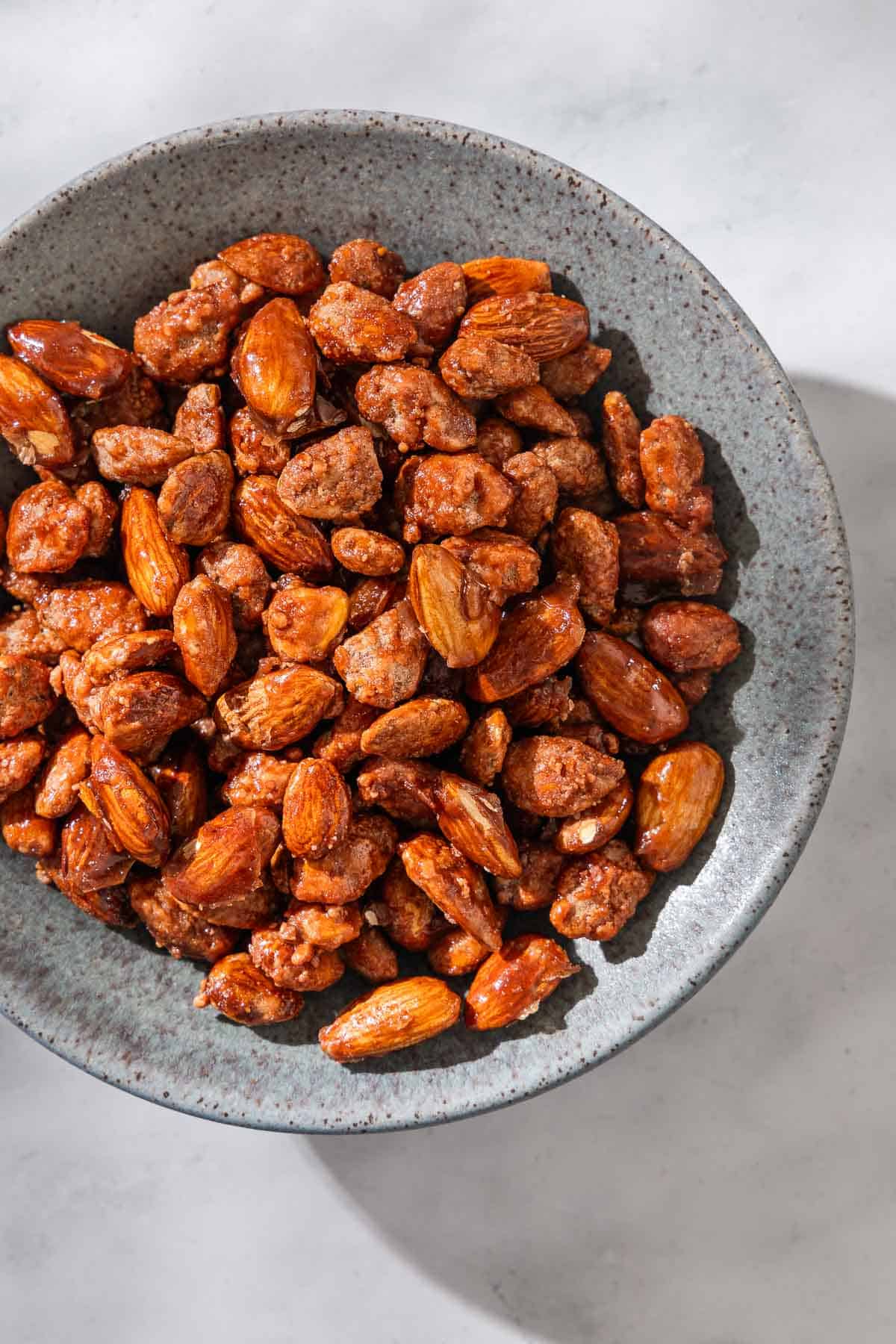
What to Serve with Candied Almonds
Candied almonds would be a wonderful addition to a holiday party spread. They’re a particularly welcome addition to the salty, creamy flavors of a Cheese Board. To drink, make a batch of another Christmas market staple, Mulled Wine, or festive Holiday Sangria.
If you really want to impress, go all out with a dessert platter or cookie boxes to give to loved ones with jam-filled Pizzicati, chocolate and hazelnut Baci di Dama, pine nut studded Pignoli Cookies, Candied Orange Peel, and Easy Biscotti.
Browse all Mediterranean recipes.
Visit Our Shop.
More Recipes for Your Holiday Treat Tray
Candied Almonds
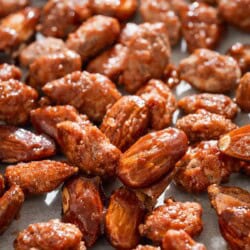
Ingredients
- 1 3/4 cups (250g) raw almonds
- 1 cup (200g) granulated sugar
- 1/2 cup (120ml) water
- 1 teaspoon vanilla extract
- 1/4 teaspoon kosher salt
- 1 teaspoon ground cinnamon (optional, see note)
Instructions
- Get ready: Line a baking sheet with parchment paper and set it next to the stove.
- Boil the syrup: In a large frying pan, combine the almonds, sugar, water, vanilla, salt, and cinnamon (if using). Bring the mixture to a boil over medium-high heat. Reduce the heat to medium and continue to boil, stirring occasionally with a wooden spoon, until the mixture begins to thicken and the bubbles are larger and glasslike, 3 to 5 minutes.
- Reduce the syrup: Reduce the heat to low to maintain a simmer while stirring constantly with the wooden spoon. The syrup will continue to thicken while the water evaporates. Then, as the sugar begins to recrystallize, the syrup will become gritty. All of a sudden, the sugar will fully crystallize. This should take 15 to 20 minutes.
- Caramelize the almonds: Increase the heat to medium-high and stir constantly, scraping the sugar from the bottom and sides of the pan. Continue cooking until the sugar melts again, coating the almonds, 4 to 5 minutes. Quickly transfer the candied almonds to the parchment-lined baking sheet. Use the wooden spoon to separate the almonds.
- Serve: Let the almonds cool completely before serving.
Notes
- Visit our shop to browse quality Mediterranean ingredients including olive oils, honey, jams, and spices.
- Storage: The almonds will keep for up to 2 weeks sealed in an airtight container. If exposed to humidity, they will get sticky or start to melt.
- Cinnamon or no cinnamon? If you haven’t caramelized sugar before or you’re worried about burning the almonds, consider skipping the cinnamon to make it easier until you get a feel for the process. The cinnamon makes these almonds even more irresistible, but it also turns the sugar brown. This makes it difficult to see if it is caramelizing, a helpful visual cue for adjusting the burner temperature.
Nutrition
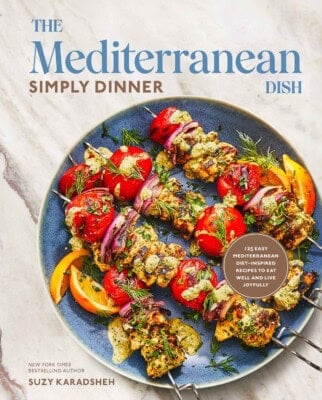
The Mediterranean Dish: Simply Dinner
125 Easy Mediterranean Diet-Inspired Recipes to Eat Well and Live Joyfully from New York Times Bestselling Author Suzy Karadsheh
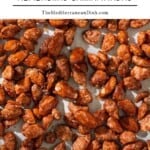
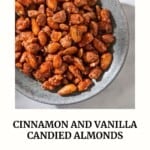
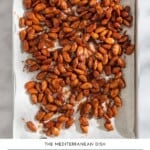
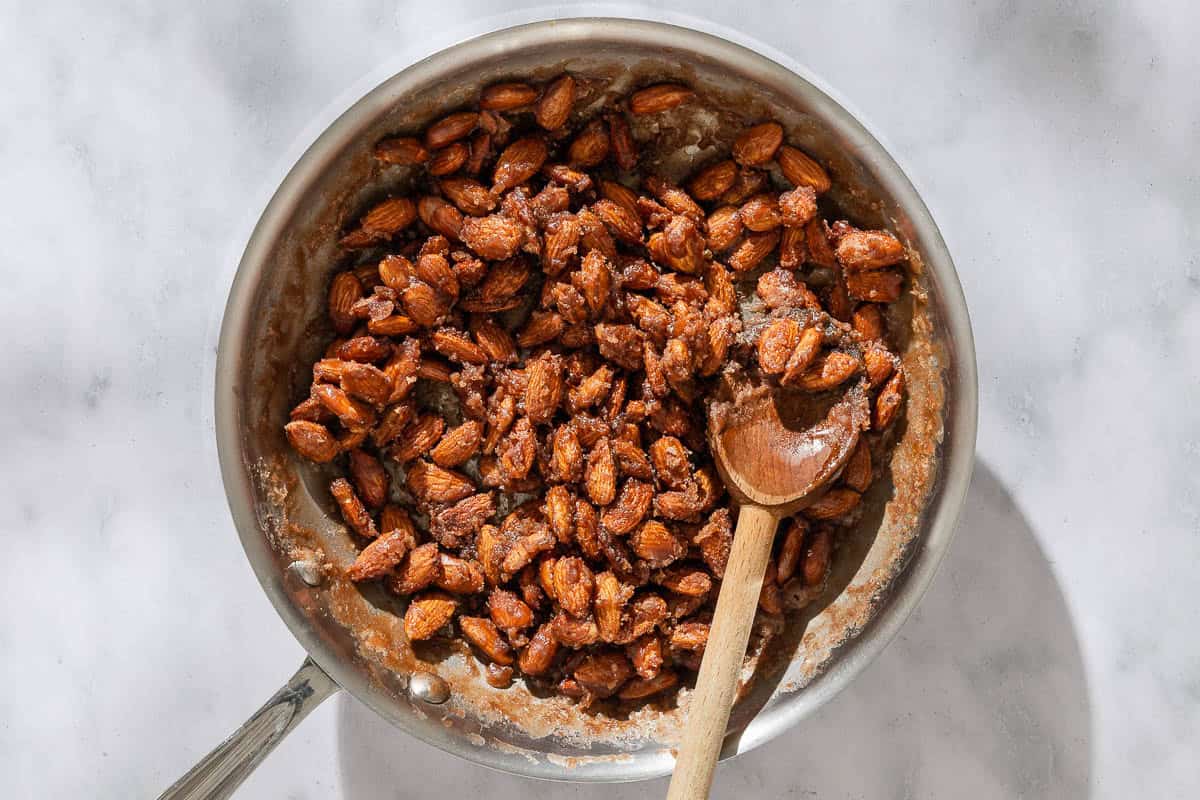
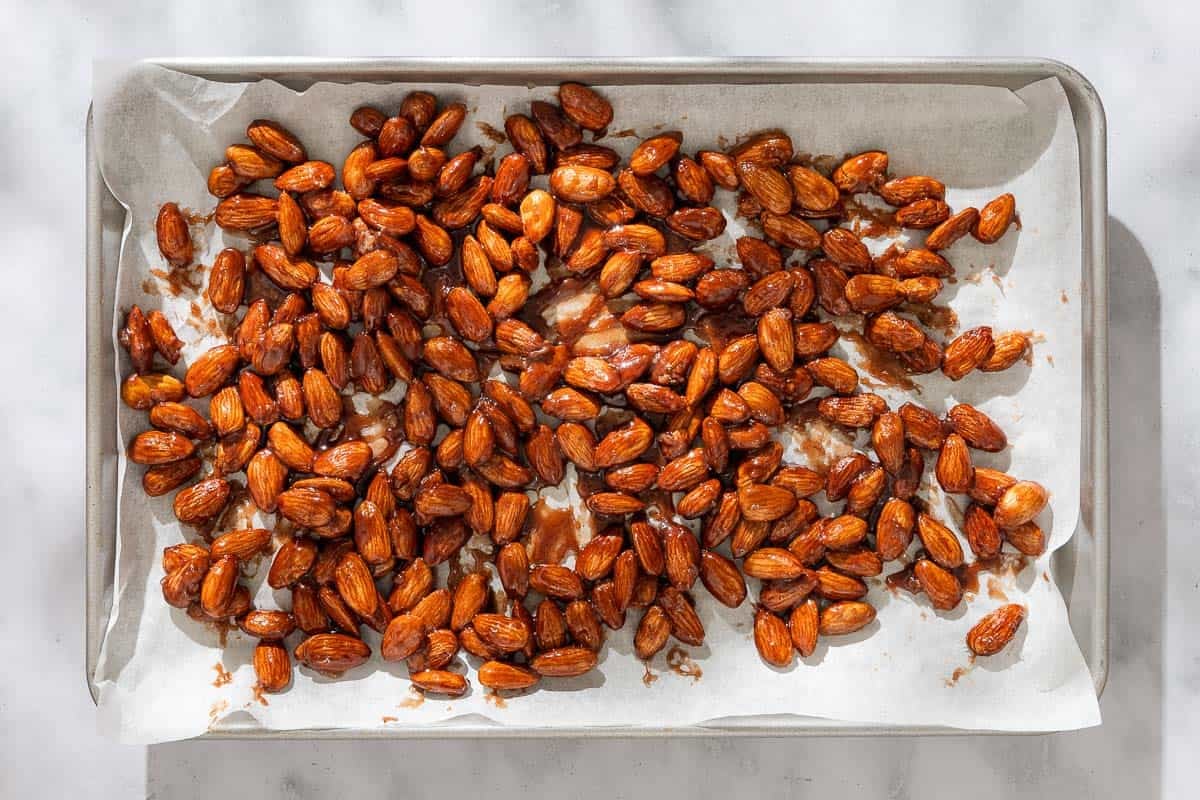
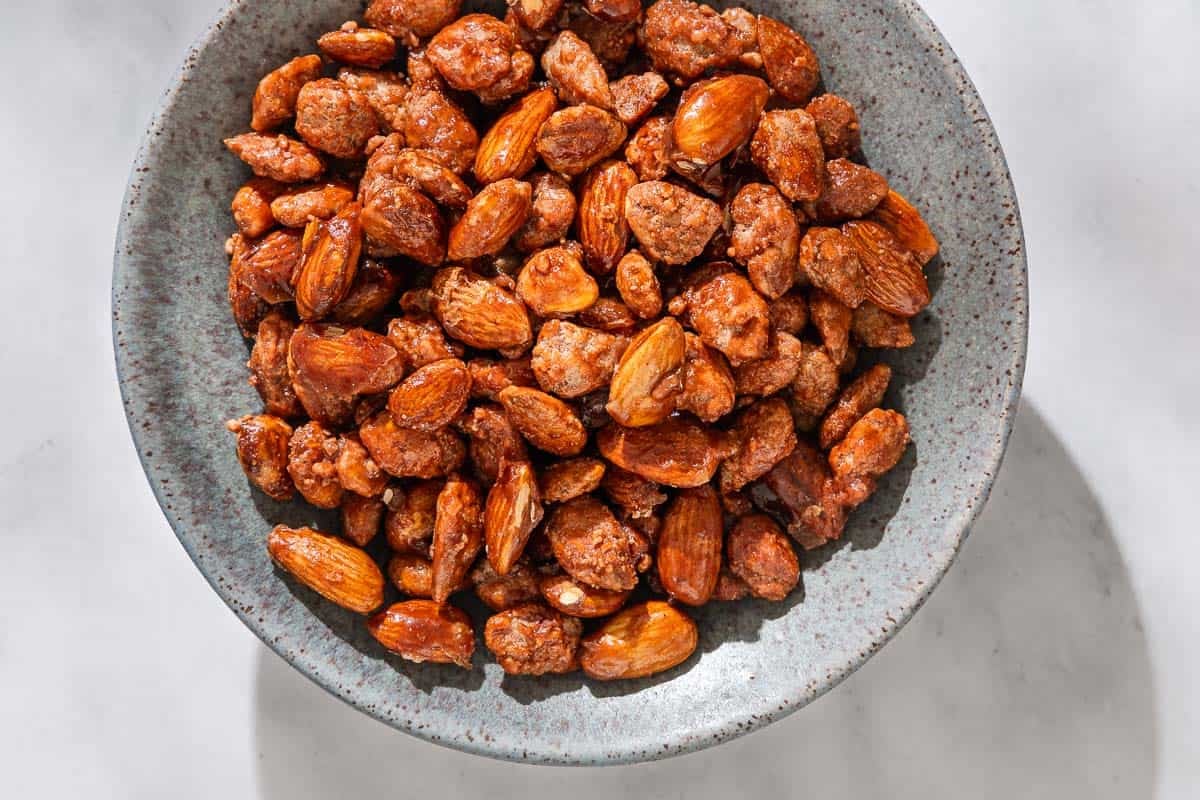
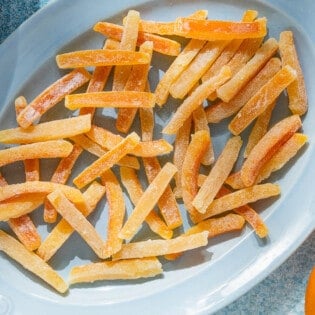
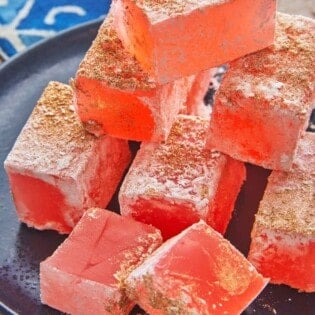
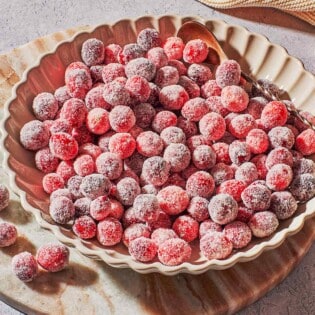
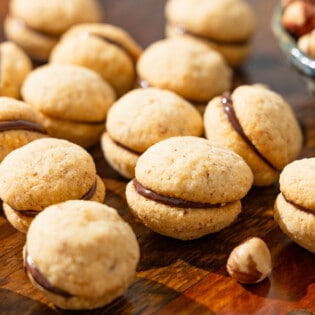
When exactly are you supposed to add the almonds?
Hi, Faith. You add them in step 2: Boil the syrup- In a large frying pan, combine 1 3/4 cups raw almonds, 1 cup granulated sugar, 1/2 cup water, 1 teaspoon vanilla extract, 1/4 teaspoon kosher salt, and (optionally) 1 teaspoon ground cinnamon.